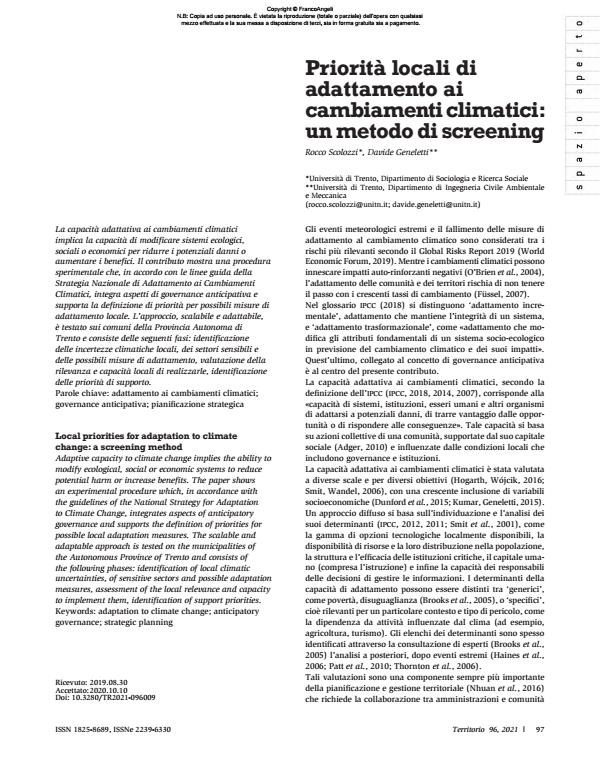Priorità locali di adattamento ai cambiamenti climatici: un metodo di screening
Titolo Rivista TERRITORIO
Autori/Curatori Rocco Scolozzi, Davide Geneletti
Anno di pubblicazione 2021 Fascicolo 2021/96
Lingua Italiano Numero pagine 11 P. 97-107 Dimensione file 995 KB
DOI 10.3280/TR2021-096009
Il DOI è il codice a barre della proprietà intellettuale: per saperne di più
clicca qui
Qui sotto puoi vedere in anteprima la prima pagina di questo articolo.
Se questo articolo ti interessa, lo puoi acquistare (e scaricare in formato pdf) seguendo le facili indicazioni per acquistare il download credit. Acquista Download Credits per scaricare questo Articolo in formato PDF

FrancoAngeli è membro della Publishers International Linking Association, Inc (PILA)associazione indipendente e non profit per facilitare (attraverso i servizi tecnologici implementati da CrossRef.org) l’accesso degli studiosi ai contenuti digitali nelle pubblicazioni professionali e scientifiche
La capacità adattativa ai cambiamenti climatici implica la capacità di modificare sistemi ecologici, sociali o economici per ridurre i potenziali danni o aumentare i benefici. Il contributo mostra una procedura sperimentale che, in accordo con le linee guida della Strategia Nazionale di Adattamento ai Cambiamenti Climatici, integra aspetti di governance anticipativa e supporta la definizione di priorità per possibili misure di adattamento locale. L’approccio, scalabile e adattabile, è testato sui comuni della Provincia Autonoma di Trento e consiste delle seguenti fasi: identificazione delle incertezze climatiche locali, dei settori sensibili e delle possibili misure di adattamento, valutazione della rilevanza e capacità locali di realizzarle, identificazione delle priorità di supporto.
Parole chiave:Adattamento ai cambiamenti climatici; governance anticipativa; pianificazione strategica
Rocco Scolozzi, Davide Geneletti, Priorità locali di adattamento ai cambiamenti climatici: un metodo di screening in "TERRITORIO" 96/2021, pp 97-107, DOI: 10.3280/TR2021-096009